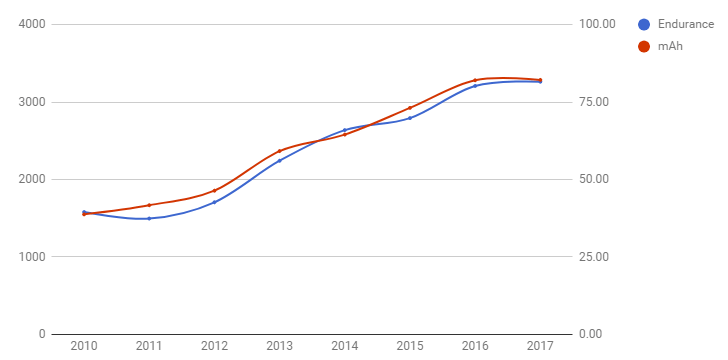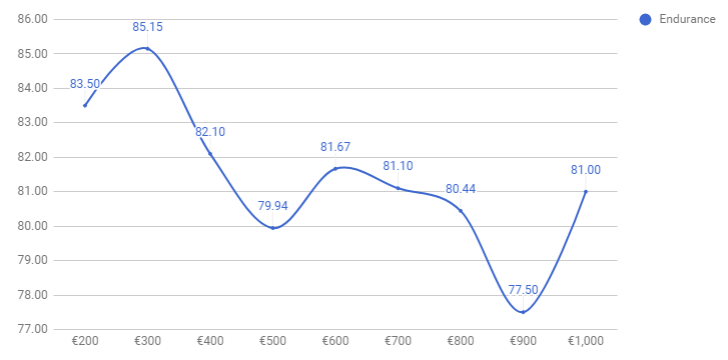
We’ve looked at smartphone batteries
before, but that was just the raw capacity. As you well know, the size
of the battery is not the only measure of how long you can go between
charges. Our battery test gives a more realistic result so let’s chart
that.
We suspected that with each year, the Endurance rating will grow but
also that newer phones will get better Endurance per mAh. As you can see
from the chart below the former is true, the latter is not.

Starting at around 40 hours between charges for a 2010 phone, the
average 2017 phone can get double that. And it has been a fairly steady
growth – keep this up and by 2024 the average phone might last 160
hours.
The average phone. Even today there are outstanding
individuals (like the Lenovo P2) that can do 150 hours or so. But they
are the outliers, the majority of phones today can’t cross the 100 hour
mark.
Efficiency has not increased, really. We tried plotting it but it
turned out to be a boring chart as it was basically flat. We did find
this interesting, though — the average phone gets about a minute and a
half per milliamp hour of battery.
We’ll close this off with a bit of shopping advice. We took the
phones from 2017 and plotted their average Endurance rating per price
category. We only did it for last year’s phones because prices for
anything older are unreliable (depends on region, availability and so
on).

The conclusion seems pretty obvious – more money does not always buy
you better battery life. If you want battery bang for your buck, the
€300 segment is the sweet spot. These phones tend to have solid
mid-range chipsets too, so you won’t be slumming it with a glorified
calculator.



No comments:
Post a Comment